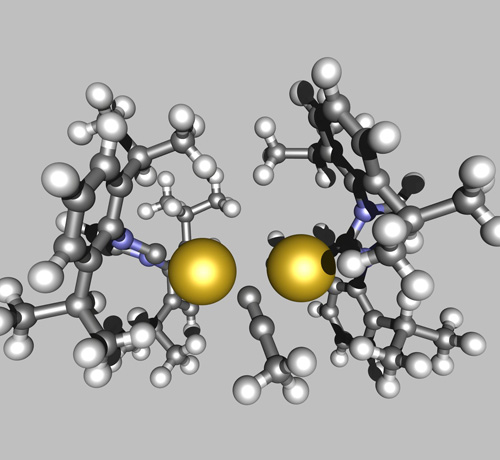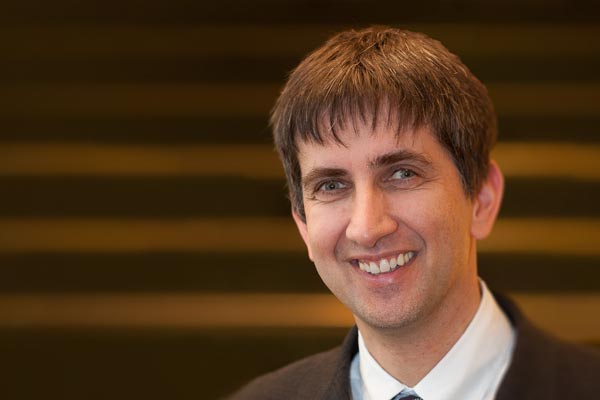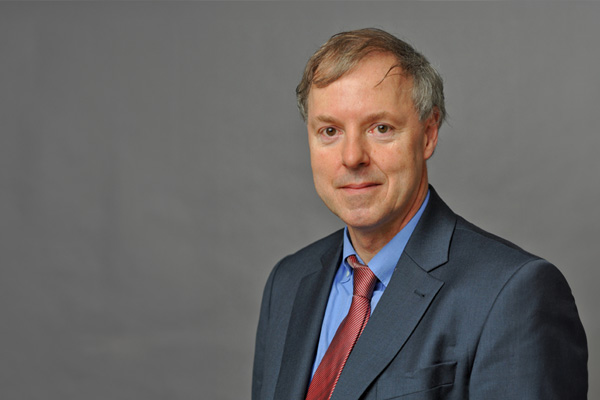Fundamentals of gold catalysis
Dr. Sarah Bay – Hector Fellow A. Stephen K. Hashmi
Dr. Jean-Francois Greisch – Hector Fellow Manfred Kappes
In this project of the Hector Fellows A. Stephen K. Hashmi and Manfred Kappes the postdocs Dr. Sarah Bay (University of Heidelberg) and Dr. Jean-Francois Greisch (Karlsruhe Institute of Technology) are involved. They examine the characteristics of innovative gold catalysts.
The figure shows the workhorse, a dual activation catalyst. Direct activity assessment including the influence of byproducts (e.g. small clusters of various charge states) as well as the identification of reaction intermediates has been missing, which finally prevented efficient optimization. Since concentrations of the new highly active gold catalysts are typically low and the active species are fragile, characterization using analytic techniques is challenging.
Nevertheless, the combination of high-resolution mass spectrometry and mild ionization methods provided a unique opportunity to directly probe catalyst-substrate-intermediates using a broad range of spectroscopic techniques.
Via ion mobility measurements, collision cross-sections could be inferred and structural information on the isolated intermediates of reactions obtained. Reaction of gas-phase species with vapors could provide unique information on the reactivity, making it possible to assess how different isomers/conformers contribute to the reaction. Finally, optical spectroscopic techniques could be used to probe the structure and the electronic states as well as to isolate species for further investigation via hole-burning spectroscopy.
By analyzing the reaction mixture and developing new approaches to accessing transient species, the project aimed at obtaining unprecedented information on the mechanisms and species involved in gold-catalyzed reactions.

Dual activation catalyst
Dr. Sarah Bay
PostDocDr. Jean-Francois Greisch
PostDocSupervised by

A. Stephen K. Hashmi
ChemistryHector Fellow since 2010

Manfred Kappes
Chemistry & PhysicsHector Fellow since 2009


